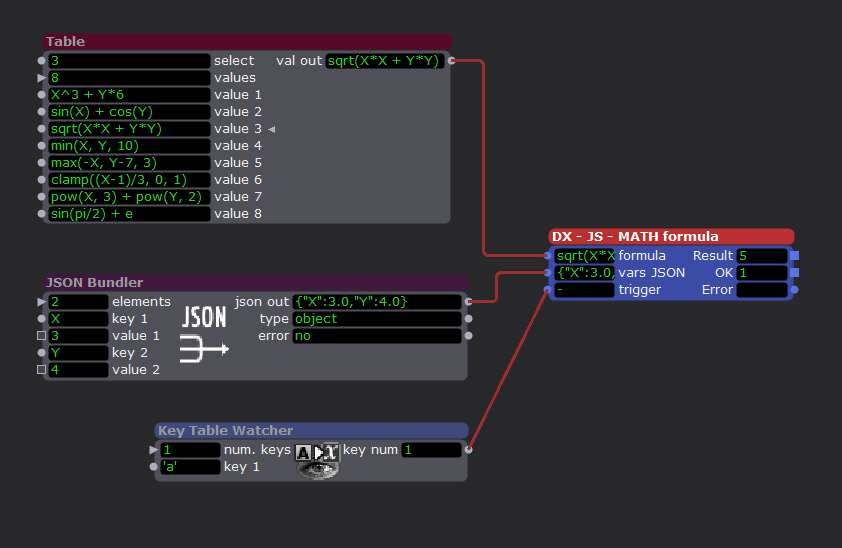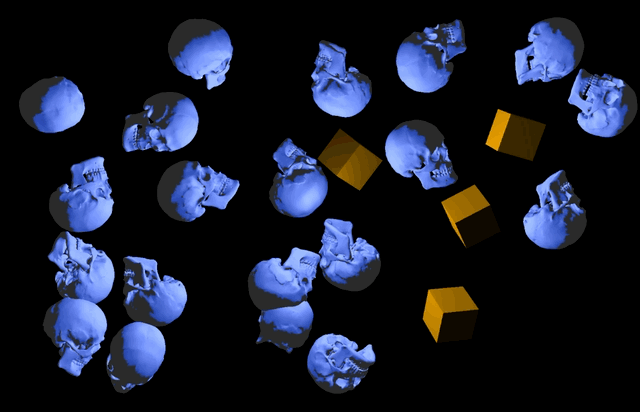Hi Ryan,
Apologies for the slow response. I did try your 'Collect Media Files' Pythoner on a couple of projects and it collected files from cloud storage and locally compiled a folder as described - great stuff! I did note that the pathnames to the assets did not change in the newly saved version. I think you indicate that the assets might be reassigned in the created archive? I haven't had a chance to try to port a 'collected' project to a different network computer yet.
Isadora also allows several files to be associated with a scene through various actors, like Data Array etc. and even .oni skeleton files so these get left out of the 'collect all process' or do yiu think there is another way to scrape a project for associated files?
Your offer will definitely help to clean up archives etc.
Best Wishes,
Russell
Hi All, I use a Grass Valley Video switcher and would like to control video clip playback with Isadora from a computer.
The Isadora side I'm very familiar with, it's the different protocal languages coming from the switcher that I'm trying to put together to send Isadora commands like Play, Stop Rew and more if I can.
My Current Choices:
1, Contact closure, would work but it's so rudimentary and I would need to setup many triggers, but it's really easy.
2, RS-422, VTR/BVW, this has been around a long time and is probably what I'll settle on because I'm not a coder, but trying to learn.
3, AMP (Asynchronis Messaging Protocol) I'm most interested in this because it's IP base and makes a clean install, however as I said I'm not a coder and I'm having problems on where to start.
4, There are some other Protocols but most of them are proprietary.
Thoughts?
I'm starting my deep dive today.
@bonemap said:
make a User Actor from group selection in the Scene Editor
Yes, I want this as well. It's on the list for sure.
The math inputs would also be nice, and is on the list as well.
With that said, this made me think a bit about calculations, and with some AI help I whipped up this user actor, that will take a math formula, and a set of values via JSON that map in, and will calculate your formula in one go. dx-js-math-formula.iua4
Much easier than a bunch of math/calculator actors, and more convenient than creating custom JS scripts for every calculation
NOTE: you can right-click the user actor and open the HELP in the browser (its long)

Hi,
Having an option to make a User Actor from group selection in the Scene Editor would be supper efficient. I am not sure if this has been requested previously but would be a great addition. Another boost would be number input fields that resolve math - could be so good.
best wishes,
Russell
Hi,
Wishing the Isadora community good spirits for the season!
I have been working on updating the 3D object collision options in Isadora. Specifically to detect boundary collisions and object–object collisions in 3D space. The patch attached below is an offer to anyone interested in using 3D models and provides position and rotation outputs for the Isadora 3D Player actor: translate x,y,z and rotation x,y,z to simulate objects colliding, pushing and bouncing off each other and also bouncing off a boundary box aligned to 3d space. The actor provides inputs as follows:
- dt (recommended as a constant pulse input at 60hz)
- bounding box H,W,D (use in conjunction with a 3D Stage Orientation actor in the scene editor- move along the z axis to fit the stage)
- radius (the size of the collision detection relative to the size of the 3D object edge. This is based on a sphere.)
- bounciness of the object collisions
- initial speed of the objects when reset
- floaty to liveliness of the movement
- reset (retrigger)
A limitation is that the actor assumes the 3D objects are all a similar size for collision detection.
the actor is easily modified for the number of 3d objects in the scene. Just one line in the code is changed relating to BODY-COUNT (the number of 3D objects in the patch). The corresponding outputs are then available by adjusting the number of outputs of the actor. (Each object has six outputs associated with translation and rotation)

here is 3DCollisionJS_2025 for Isadora 4, code assisted by copilot.
Best Wishes,
Russell
How are you values packed with the Matrix value receive?
The output of the actor is Text.
If you have something like 1,2,3,4,5 as the output from the Matrix Value Receive actor, that will be text, and will be sent as text when sent via OSC.
You will need to unpack the text on the PD side, and convert each numeric Text element into a float there.
How many values are you sending? If its a manageable number, you can send a bunch of numbers over OSC by using the OSC Multi Transmit actor.
Another option (if PD can unpack JSON) is to bundle your data as JSON, and unpack on the PD side.
@dcmp said:
How can I treat a dynamic list in Isadora so that I receive it as a float?
A list, by definition, cannot be "a float" because it's comprised of multiple items and a float is just one number.
1.5 is a float
1.5, 1.7, 1.8 is a string that contains a list of floats
Can you attach a screenshot of the OSC Transmit actor you're using?
Hi Everyone.
I'm using the Matrix value receive actor in combination with the OSC transmit actor to send a list to Pure data. However when I'm unpacking the list I keep getting a 'type mismatched' error message in the PD window. So it seems that isadora is sending the data in something other than a float? How can I treat a dynamic list in Isadora so that I receive it as a float? Perhaps the Text Parser, but I would need some further info.
Thanks and best wishes!
Madison
@dbengali Hello! I couldn't replicate the issue with an Apple Pro Res 422 file nor a quick AVC codec saved via QuickTime Pro. I'm running on a MacBook Pro M2 / Tahoe 26.1 / Isadora 4.1.3
Best wishes Simon
I can't replicate this with APR422.mov video files on an Intel or Apple Silicon Mac with Isadora 4.1.3.
Can you please use the link in my signature to open a ticket and send in a description of the steps to cause the issue and a link to an simple file that causes the problem (including the media you're using) via Google Drive, Dropbox, or similar cloud storage platform?